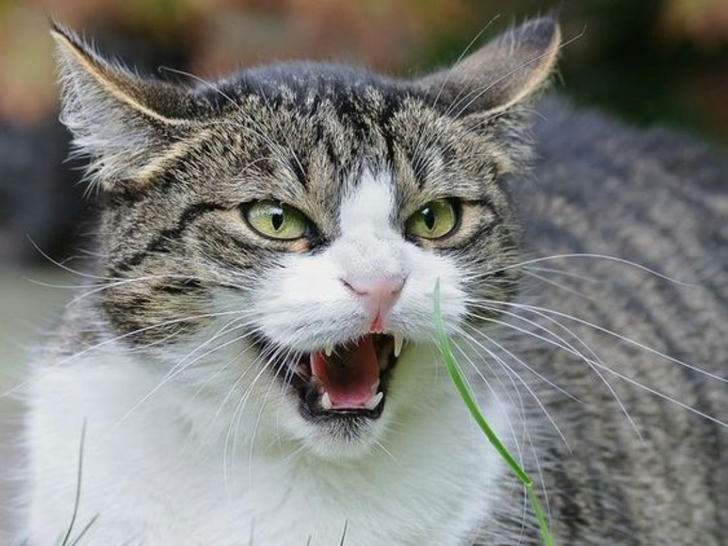Training Your Cat

Cats are unique creatures with distinct behaviors shaped by their instincts and environment. Understanding these behaviors is crucial for effective training. Cats possess natural hunting instincts, which influence their play and behavior, and recognizing these instincts can help in channeling their energy positively. Cats communicate through body language; understanding signals like tail positioning, ear orientation, and vocalizations can provide insight into their feelings.

Effective Training Techniques
Training your cat requires patience and consistency. Here are some specific techniques to enhance your training sessions:
Positive Reinforcement:
Use treats, praise, or playtime as rewards for desired behaviors. Start by rewarding your cat immediately after they perform the behavior you want to encourage. This could include sitting on command, using the litter box properly, or playing nicely. Gradually reduce the frequency of treats as your cat learns the behavior, transitioning to praise or play as reinforcement.
Clicker Training:
A clicker can be a powerful tool for marking desired behaviors. When your cat performs a behavior you want to reinforce, click the clicker and immediately give a treat. This helps your cat associate the sound with positive reinforcement. Practice regularly to help your cat understand the connection between the click, the action, and the reward.
Target Training:
Use a target stick to guide your cat into specific positions or behaviors. Hold the target stick in front of your cat, encouraging them to touch it with their nose. Once they do, reward them immediately. This technique can be expanded to teach your cat to perform tricks, like jumping through hoops or following commands.
Short and Engaging Sessions:
Keep training sessions brief, around 5-10 minutes, to maintain your cat’s attention. Cats can become bored or frustrated with prolonged sessions. Focus on one or two behaviors per session, allowing for frequent breaks and playtime to keep your cat engaged and motivated.
Gradual Exposure:
Introduce your cat to new experiences, sounds, and environments gradually. Start with low-stress situations and gradually increase the complexity. For example, if your cat is nervous about the vacuum cleaner, begin by letting them observe it from a distance while providing treats and praise. Over time, decrease the distance as they become more comfortable.
Environmental Enrichment:
Provide various toys and activities to keep your cat mentally stimulated. Puzzle feeders, scratching posts, and interactive toys can help channel their energy positively and reduce boredom-related behavioral issues. Engage in regular play sessions to strengthen your bond and reinforce training.
Handling and Grooming:
Accustom your cat to being handled and groomed from a young age. Start by gently touching their paws, ears, and tail, rewarding them with treats for calm behavior. Gradually introduce grooming tools, like brushes, allowing them to sniff the tools before using them. This can help reduce fear and aggression during grooming sessions.
By implementing these specific training techniques, you can create a more effective and enjoyable training experience for both you and your cat, fostering a well-adjusted and happy feline companion.

Addressing Common Behavioral Issues
Behavioral issues can arise for various reasons, and addressing them promptly is essential. For instance, if your cat is urinating outside the litter box, it could be due to stress, territorial marking, or litter box aversion; ensure your cat has a clean litter box in a quiet location, and if the issue persists, consider using pheromone diffusers to create a calming environment while providing multiple litter boxes if you have multiple cats to reduce competition. If your cat exhibits undesirable behaviors, identify the underlying cause, such as boredom or anxiety, and provide engaging toys, scratching posts, and interactive play to keep them stimulated. Begin socialization as early as possible by exposing kittens to various people, environments, and experiences, using treats and positive reinforcement to reward brave behavior during these encounters.

Building Confidence in Fearful Cats and Addressing Fear Aggression
Fearful cats often exhibit behaviors rooted in anxiety, leading to fear aggression. Recognizing signs of fear, such as hiding or excessive grooming, is essential. Look for triggers that cause their fear, like loud noises or sudden movements, and create a safe environment by gradually exposing your cat to new experiences while engaging them in interactive play sessions using toys that mimic prey to stimulate their natural instincts and encourage confidence. Gradually desensitize your cat to fear triggers in a controlled environment, allowing them to acclimate without feeling threatened, and pair exposure to these triggers with positive reinforcement to create good associations.

Common Challenges in Training
Training cats can present unique challenges, but understanding these can help navigate the process. Some cats may resist training initially; be patient and persistent, avoiding punishment to prevent increasing fear and anxiety. If your cat regresses in behavior, assess possible stressors in their environment and adjust training methods accordingly. If your cat is hesitant around new people or pets, continue to provide positive exposure in a safe, controlled manner and use treats to reward calm behavior during interactions.
By incorporating these insights and strategies, you can create a positive training experience that benefits both you and your feline friend.
